#legend of zelda meta
Text
to solidify my point that it totally makes sense for Rauru to be the first king of this Era's Hyrule- here are the two other occasions Hyrule is destroyed and then re-established.
-BOTW/AOC, Hyrule is destroyed in the Calamity, while it's not necessarily re-established afterwards it is considered an ancient & lost kingdom in the eyes of locals.
-Wind Waker/The Phantom Duology, Hyrule is destroyed and is lying dormant under the great sea and is seen re-established in Spirit Tracks.
all I'm saying is that TOTK clearly doesn't retcon Skyward Sword from the timeline, it's plenty possible for the Zonai to exist and to have founded Hyrule as a kingdom.
#legend of zelda#loz#zelda#tloz#the legend of zelda#tears of the kingdom#totk#botw totk#loz totk#rauru#skyward sword#wind waker#phantom hourglass#spirit tracks#age of calamity#breath of the wild#legend of zelda meta#loz meta#discussion post
203 notes
·
View notes
Text
Where were the princess and the hero when the Sheikah were persecuted? The Sheikah persecution happened shortly after the Calamity’s defeat 10,100 years ago (it was the same king who ruled at the time the Calamity was vanquished), so weren’t the princess and hero still around for that? If so, why didn’t they protect the Sheikah? The Sheikah who retreated into Kakariko Village even prayed to the goddess for deliverance, the same goddess whose descendant/incarnation had just worked alongside the Sheikah to defeat the Calamity.
Where was that princess/goddess in their hour of need? Did she ignore their pleas? Did she approve of her father’s actions? If she had wanted to defy him, she easily could have — she’s the special one, after all. She’s the chosen princess whose sacred power justifies the monarchy’s existence, and she just saved the entire realm from evil. If she wanted to, she should have been able to overthrow her father with popular support. No one cares about the king of Hyrule, lmao. He’s just a placeholder for the true heir.
The narrative goes out of its way to tell us how compassionate and noble the princess is. No matter how bad the monarchy is, Princess Zelda always seems to transcend that. Even if she makes mistakes, her intentions are always good.
How convenient for the goddess’s heir that she rarely has to get blood on her hands. It’s always the king, or the Sheikah, or the chosen hero who commit extreme acts of violence in her name. Zelda herself is either locked out of the war and needing to be rescued, or can only play a supportive role to the real hero/killer, Link.
So maybe, just maybe, when the Sheikah were betrayed, the princess decided to look away. This is how it’s supposed to work, after all. She needs the king just like she needs the hero. To do the unpleasant work of upholding an authoritarian system so that she can maintain her pristine, saintly image for the masses. Zelda is the proverbial carrot used to assuage the populace’s fear and entice them with the promise of salvation; Link/the king of Hyrule are the stick, keeping them in line with the threat of violence, and taking the fall whenever they transgress too far; and Ganon (and other designated villains) are the scapegoats, the bogeymen whom Zelda and her pawns allies valiantly keep at bay.
Either that, or the princess was somehow too weak/cowardly to stand against her father’s unreasonable actions. I don’t know which is worse. Or maybe she died fighting the Calamity lmao
Anyway, Hyrule is a dystopia and Ganondorf’s plan for “eternal darkness” honestly isn’t much worse than Hyrule’s “eternal light.” In Ganondorf’s world of darkness, everyone struggles the same regardless of the circumstances of their birth. In Hyrule’s world of light, your right to exist depends on the whims of a sanctimonious (yet always divine) monarch and his simpering (yet always saintly) daughter.
18 notes
·
View notes
Text
Once the time for the great evil to appear passes, and no man has been born to the Gerudo, all take a sigh of relief. The prophecy will not come to pass this go around, they think.
But there's one Gerudo, with long red hair and a veil over her face, a thin attempt to try and hide a truth no one could see anyway
She has all the parts, and no more strong is she than the average woman of her race. She's normal. Absolutely normal. A good Gerudo girl who's mind had never been touched by the miasma of Ganon.
But one day, a young blond Hylian visits. He is strong, and earns the respect of the Gerudo soldiers easily. A sword of mystic powers strapped to his back and centuries of the trees, the sky, and courage lay in his history. It's not his time yet, this good Gerudo girl knows- but she doesn't tell anyone.
This Hylian, he leaves the city. He cannot reside in the same quarters as the women, and in a town of all women this means he must sleep outside. The boy is not bothered, he sets up camp at the city walls with indifference, and for some unknown reason, the good Gerudo girl goes out to meet him.
"I've simply brought provisions, nothing more." She tells him. The Hylian doesn't speak, he never speaks, but he smiles. The mark on her hand pulses.
The Hylian invites her to sit, and out of some sort of obligation she does. She cuts up the fruit she'd brought for the Hylian, and the Hylian gives her another smile. She feels sick, in a way. The heat of the desert night persists, and as a bead of sweat trails down her back, she becomes hyper aware of herself. The jewelry on her ankles accentuating dainty legs, the elegant bow of her straight back encircled in gold, the high ponytail of red hair cascading over her shoulder. She was a good Gerudo girl.
It's summer in the Gerudo Desert. Even at night, the heat easily clears 100 degrees. The Hylian, the Hero, he strips. Casually, as though unashamed in the presence of a good Gerudo girl. She'd been told the Hylians were more prudish than her own people, but something about this one, he was wild. The deranged holiness of the forest and the skies shone in his eyes. When he prompted her, the good Gerudo girl took off her own top. Laid bare before the Hylian, he did nothing. The Hero simply sat down once more, gazing up at the stars as he accepted the cut fruit. Slowly, carefully, breathing shallow as though a sword was to her neck, she shed the loose pants cinched with gold at her waist. The Hero only glanced over, uninterested. The mark on her hand throbbed harshly, and the mark on the Hylian's hand did the same.
But that didn't matter. She was a good Gerudo girl, and the great evil hadn't been born this time around. No sin had been bred in her mind, no power she wielded more than normal.
Right?
Right.
Trying to be as inconspicuous as possible, she copied the Hero's stance. Her own elegant posture was that of a good Gerudo girl, she'd trained it into herself since she was but a child. The warrior at her side had the lazy stance of a predator, as though he were a jaguar lounging over its prey. The Gerudo girl didn't want to be prey, but as she rearranged her legs and shifted her waist to copy the Hero, she couldn't help but feel as though she'd fallen into the Hylian's lap. The pleased smirk on his face could have been a figment of the Gerudo girl's imagination, and the sharp blue eyes roving over her body could have been a trick of the light.
The hero did nothing, though, and now both in the position of men, horrible, un-Gerudo-like Men, the Gerudo girl closed golden eyes and reached out. The hand with a mark identical to hers, except for the triangle on the opposite side filled instead, took hers.
She was an awful Gerudo girl.
The Hylian drew words in Gerudo script in the sand, and pointed them out to the very bad Gerudo girl.
Your name? he had asked.
The very bad Gerudo girl couldn't speak her name aloud. She would be an even worse Gerudo girl than than if she didn't say it at all. Perhaps this Hylian was wise, sticking to the ways of silence.
As though admitting to the greatest sin of all, the Gerudo girl who was perhaps not a girl at all, wrote in the sand one of her numerous secrets.
Ganondorf.
#legend of zelda#ganlink#ganondorf#loz#link#legend of zelda meta#legend of zelda fic#ganlink fic#trans ganondorf
196 notes
·
View notes
Text
by my estimate, the ball and chain from zelda weighs roughly 821 pounds.
Tl;dr: I did a lot of math, found out how much a civil war cannonball weighed and its size, and determined that a single pound of iron is roughly 3.7233333333 square inches, and from there figured out the weight of the ball and chain if the ball has an estimated diameter of 18 inches (it does cover up Link's entire torso when he carries it in Twilight Princess), which rounds up to 821 pounds--assuming that it's solid all the way through. If it was hollow inside, it would weigh less, but still.
And yes. Link is absolutely built different, and this is a video game weapon, not a practical one. But would he have the leverage to use something that weighs about six times as much as he does?
I'll hazard a guess here that the power bracelets manipulate gravity instead of actually making Link stronger; they either reduce gravity on the object that's being moved or else fix Link's position rather than him sliding out of the way due to being lighter than the object he's trying to move. The first scenario seems to be the most likely ones in most games, but for Hyrule Warriors specifically where the golden gauntlets are used with a weapon where nullifying its gravity would nullify its force as well, the second option is the most probable.
The way I would fix this issue would be to make the ball less ridiculously large. While this makes it less effective to use against a mob of enemies (as in Hyrule Warriors), it opens up new options as to how the weapon can be manipulated--it could be used just to bludgeon things to death, or it could be used similar to a bola, with the chain wrapping around to ensnare the target.
And here's where I get theoretical. The ball and chain (thus modified) would be one hell of an effective weapon against Lynels. With the length of the chain, as long as you've got it moving and are skilled enough you can keep the Lynel further away from you. Also, it could wrap around the edge of the Lynel's shield, getting around its guard very effectively; similar tactics could be used to disarm a Lynel by allowing the chain to wrap around the weapon or shield and then giving a sharp pull.
However, hands down the most effective way the ball and chain could be used against a Lynel would be to wrap around one or multiple of the Lynel's legs and then trip the Lynel or even break its legs, stopping it from moving. You can then get in close and use a second weapon to attack it just about however you chose (though even a Lynel on the ground is still a Lynel, even if it's immobilized.)
Aaaand now I kind of want to write a fic where Warriors takes down a Lynel with the ball and chain while Hyrule and Wild stare in shock.
#warnings for video game violence#legend of zelda meta#breath of the wild#hyrule warriors#twilight princess#linked universe#ball and chain#overly convoluted mathematics! yay!
7 notes
·
View notes
Note
Hi hello I heard you have thoughts about monsters!!!! And i would like to hear them if it's ok with u dearest mod also have a cake slice 🍰
Thanks!
Ok so. My thoughts are that monsters being around people/close to them is not normal. In Twilight Princess multiple characters comment that the woods have changed and basically outright state that the woods being full of monsters is not normal. Usually, monsters stay far away from humans and it's some outside force that makes them appear, like how in Skyward Sword (minor spoilers) the remlits are hostile at night because of the presence of Batreaux. (I don't know how Batreaux got on Skyloft, if he was immortal until turned into a human or if there was just a secret family living there for all the years of its existence, but there it is.)
I would go so far as to state that normally, monsters avoid humans and if by some accident they were to come in contact, said monsters would rather flee than attack. The only exception would be if they were defending their homes and families, and even then they're trying to drive humans off rather than attack and kill them. This is true in both Hyrule and Termina, because Termina and Hyrule are already extremely similar.
So what changes?
Demise's curse becomes active and coerces the monsters into hostility, driving them into human interactions where they inevitably run into the hero and get decapitated. And sadly, there's no good way to relocate moblins or lizalfos like one would relocate a nuisance bear. Monsters away from malice (physical manifestations of the curse) behave completely differently from ones near it. I believe in Breath of the Wild that the monsters around Akkala Tower, where there is a lot of malice, are more alert and aware of Link's presence (though that could just be my imagination) than the ones in scattered camps.
Perhaps monsters are just as much victims of the curse as Link, Zelda and (to an extent) Ganondorf are.
#not in character#this blog has Lore and sometimes mod talks about it#meta#legend of zelda meta#violence mention
7 notes
·
View notes
Text
a lot of people have already pointed out how totk has a lot of themes of imperialism and generally leans conservative ideologically, but what i think is interesting is how totk subtly redefines what a “researcher” is.
zelda wants to be a researcher in botw, and what this means in the context of botw is largely someone who works with sheikah technology. she wants to figure out ancient sheikah tech, she has an interest in botany and otherwise nature and biology (the whole silent princess and the frog thing), robbie and purah, the two characters who are the closest to us seeing what a researcher in the context of botw is are basically inventors. in totk, however, the main researchers who are presented to us are all historians.
this is an interesting pivot, because in botw zelda is not really interested in history. if anything, the one who’s deeply concerned with history is rhoam, wanting to preserve historical tradition and his uncritical reliance on said tradition and historical precedent is what leads them to their doom. in botw, zelda is narratively opposed to history, if anything, all the ancient tech backfires on them and traditions fail to awaken zelda’s power. zelda’s urge to be a researcher is in wanting to understand the world around her, not just blindly follow ancient plans but rather have agency within them.
totk, however, is obsessed with ancient plans. the only real moment where zelda gets to geek out in totk is her getting all giddy about finding out more about the divine origins of hyrule. all the researchers in the game are concerned with finding out more about the zonai. since all the mentions of ancient sheikah technology are scrubbed from the game purah and robbie read more as strange outliers, the sheikah slate is no longer, now it’s the purah pad, a product of purah rather than something larger. the whole game is literally about following an ancient plan, a plan most characters don’t fully understand as they sign up for it. totk’s main story is built on confusion, on the characters not knowing what’s fully going on but having faith in ancient sages telling them what to do. in botw, following ancient plans you don’t fully understand was the thing that doomed you. in totk, following ancient plans you don’t fully understand is the gimmick.
that juxtaposition between the two games has an ideological through line: botw posits that progress is necessary. mindlessly relying on tradition doesn’t work. prophecies are omens, not instructions. history must be learnt from, not repeated. the ancient sheikah aren’t a group to be emulated, but rather to be learnt from, considering their machinery backfired and the royal family betrayed them. totk, however, is obsessed with the mythical history of hyrule, a time where everything was idyllic until one bad man showed up, a time we must emulate in order to win. i already talked about how the past in totk is zelda’s life pre calamity but better here, but that also plays into the idolisation of that era and its royalty. in botw, even the myth of the first calamity preserves the fact that the yiga clan has origins in the royal’s family persecution of the sheikah, even the time when they successfully held back the calamity is tinged with mistakes that still affect the world ten thousand years later. in totk, ganondorf’s origins are nebulous. nobody provoked him, nobody did anything wrong, he’s just evil because he is.
a lot of right wing ideologies are hinged on preservation, but more than that: the belief in the nebulous mythical past in which everything was better. “make america great again”, the fascist’s idolisation of ancient rome which is represented largely inaccurately, look at any conservative rhetoric and you’ll see people complaining about how things nowadays are ruined or are being ruined, how in the past things were this way and they’re not anymore, which is bad. the belief in the fact that in some past period we were great and are not anymore, and the strive to emulate that past is a trait highly typical of right wing ideologies. and in totk the past as a great era is an idea presented completely uncritically, the narrative is entirely controlled by the game and doesn’t dwell on any of the inconsistencies in this idea.
now, obviously, not every story in which a great ancient era exists is fascist, right wing or conservative. but to me what’s interesting specifically in totk is this shift between the two games: botw is critical of the past. it’s critical of arrogantly repeating history, it’s critical of having blind faith in great relics of the past. totk isn’t. totk idolizes the past, totk tells legends and tells you to believe them without any doubts. botw believes researchers are those who seek to understand the world, innovate it and solve problems without relying on ancient ways. totk believes researchers are those who discover ancient instructions, ancient ways and relay them to great men in the present to be followed. the four mainline regional quests in botw are about discovering four ancient relics that are terrorising the land and fixing the mistakes of the past. the four mainline regional quests in totk are about discovering four ancient legends are true, and receiving instructions from an ancient sage on what to do.
totk is not simply neutral, it is ideologically conservative in stark contrast to botw, because of the things it chooses to leave uncriticised, notably the things botw was very poignant about examining critically. the way totk redefines what is a researcher is indicative of this, indicative of the way it chooses to idolize or present as an unexamined good that which was nuanced in botw. totk isn’t just conservative in the sense that it presents uncritically a “good king” and “evil conquerer”, it goes deeper, it’s notable because botw was starkly opposed to the thematic axioms totk presents.
i just think it’s very interesting that they made a sequel to botw, and completely redefined or otherwise ignored botw’s thematic core.
#totk critical#loz#botw#totk#legend of zelda#tears of the kingdom#breath of the wild#meta#analysis#my hot takes
2K notes
·
View notes
Text
Something I love about the memory of Zelda and Sonia in the German dub of TotK...

(Translation: And your Link, too, is surely awaiting your return.)
Sonia uses the phrase "dein Link" ("your Link") here, which in German is a common phrase to indicate the belief that someone might have romantic feelings for another person. And the way Pauliner Weiner (Sonia's German VA) delivers this line very much indicates that she is indeed teasing Zelda a little here! Sonia ships Zelink confirmed!!
But wait. There's more!
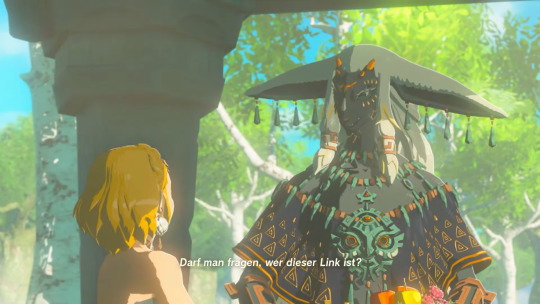
(Translation: May one ask who this Link is?)
Rauru definitely notices this too! His tone, as well as the use of the very specific article "dieser" ("this") indicate as much. If he was simply curious about who Link is in order to follow the conversation, he would more likely use the phrase "Darf ich fragen, wer Link ist?" ("May I ask who Link is?"). He is also teasing Zelda a little here.
Zelda's reply is also very sweet! While her first two lines are nothing special (she is essentially just recapping the events Breath of the Wild, as well as what led up to it), it gets interesting once Rauru reacts to her description, once again in a somewhat teasing manner (indicated by both the delivery and the language of the line):

(Translation: Oh, a hero you say.)
To which Zelda replies with:

(Translation: Link is the most steadfast and fearless knight who ever existed.)

(Translation: Yes...)
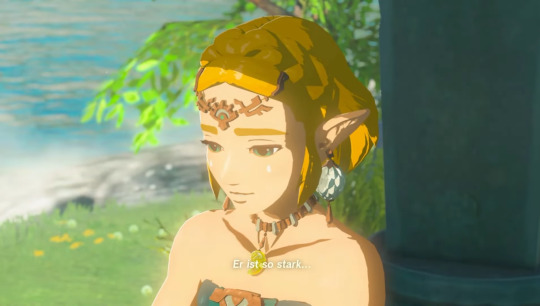
(Translation: He is so strong...)
That last line is pretty much the same in English, but Julia Casper (Zelda's German VA) does an amazing job making it sound like Zelda is not only admiring Link throughout this entire short monologue she is having, but like she is talking more to herself than to Rauru and Sonia, almost like she forgets they're there for a moment because she is thinking about Link. I really loved this little touch!
Also note that Zelda is not explicitly talking about physical strength in the last line (although she might be. It isn't clarified, leaving the interpretation of what kind of strength she is talking about up to the player).

(Translation: ... and on top of it all, he has a good heart!)
This last part seems to be directed at Rauru and Sonia again. But we're still not done!
After Rauru remarks that Zelda seems to think highly of Link and that the way she's talking about her knight makes him want to meet him, Sonia agrees and delivers a final line that, once again, makes it very clear that the two of them are engaging in a little bit of good-mannered teasing in this scene (both from what's actually said here and how Paulina Weiner delivers the line):

(Translation: Chivalrous, and full of gallantry...)
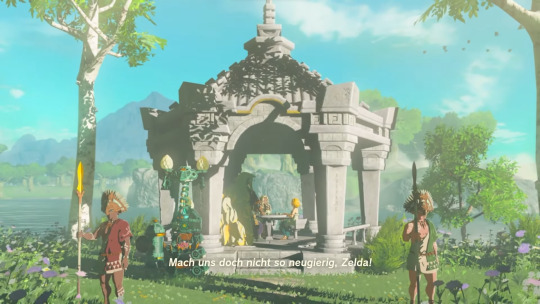
(Translation: Don't make us so curious, Zelda!)
And then they all break out in light-hearted laughter.
All in all, I really love this scene! Huge respect to the German VAs, who did an absolutely stellar job (not just in this scene, but for the game in general - especially Julia Casper!).
#The Legend of Zelda#Tears of the Kingdom#TotK#LoZ#Meta#Legend of Zelda#LoZ Meta#Analysis#LoZ Analysis#German#German dub#Zelink#Zelda#Sonia#Rauru#Currantlee here#Currantlee translating
2K notes
·
View notes
Text
I was watching a video analysing how the Yiga clan were handled in botw and how the person analysing it lamented the fact that Kohga was a joke character who totally destroyed the much more threatening image the yiga clan had all throughout the game. Although I do understand the sentiment (I felt that way for a long time) I’ve come to realise that we might not be viewing it in the right perspective. I ended up writing a comment under that video explaining how I saw things, and realised that maybe it could interest people here too? So here is the fleshed out version of it:
I think part of why they made Kohga extremely goofy compared to a way less goofy clan of literal assassins is to emphasise how even though the clan originally held some understandable beliefs, it has become a cult of personality over the years, and like most cults, the leader is way less charismatic than his followers make him out to be. Indeed, from the outside, it seems absurd how anyone could take Kohga seriously, let alone kill under his command, but from the inside, Kohga is the Beloved Leader That Guides Them Towards Victory, and anyone threatening him deserves to die.
In a way, yiga clan members feel like vulnerable, impressionable people who were enrolled into a cult and given a Big Family and a purpose (and a lethal weapon) by their lovable Master Kohga who wants the best for them… Except if you want to get out, then you’re a filthy traitor who also deserves to die. It’s especially visible when you beat him and they all get personally mad at you for killing him. They didn’t care about Ganon, they didn’t seem to actually understand the bigger picture, they only cared about Kohga.
It also shows how, like the rest of Hyrule, the Yigas are very much disconnected from their own history, seemingly holding on the grudge their ancestors held more as an excuse to continue to enact violence and perpetuate the cult of personality than fighting for a “noble” cause. Only Kohga seems to actually care about Calamity Ganon, and the rest of the yigas seem to be just tools to him. Wether or not he’s actually conscious of what he’s doing is unclear. Is he a fully aware con artist, or is he purely another product of Yiga indoctrination?
So yeah, to me it feels like a parody/critic/mockery of cult dynamics. It shows that this gang of assassins are indeed a real menace, but for seemingly no reason other than “that one lunatic they admire told them to” and “if they go away they get killed”. The reason why the clan was originally created becomes almost anecdotal. Under the current leader, no one is required to actually know what they’re doing, they just need to follow orders.
In the end, I think it is the intention the developers had because cults are a rampant problem in Japan. At the very least, even if it’s not a actually conscious critic, it’s a concept that is much more present in their cultural landscape than ours and that almost certainly influenced how they handled the Yiga clan. Basically, cults are not cool and can even be dangerous both for the public and their members. Cult leaders especially are not cool and often are con artists. Therefore, Kohga couldn’t be badass, he had to be a doofus getting beaten in the most unexceptional way possible.
#botw#breath of the wild#master kohga#yiga clan#kohga#loz#the legend of Zelda#tloz#meta analysis#i purposefully didn’t talk about kohga’s change of heart in AoC because to me this game is not canon#one could argue it proves that Kohga is actually not aware of how catastrophic enabling Ganon would be#but for the sake of keeping it focused on botw I didn’t mention it#cult mention#valictini talks
2K notes
·
View notes
Text
A Record of the Calamity
This collection of meta essays explores the worldbuilding and cultural background of Hyrule and its inhabitants during the timeline of Breath of the Wild and Tears of the Kingdom.
Ninja Lore in Breath of the Wild
On the historical precedents of the Sheikah, the origins of the names "Yiga" and "Kohga," and how the culture of historical ninja is referenced in the story and setting of Breath of the Wild.
Governance in Hyrule
On the nature and questionable necessity of the Hyrulean monarchy in comparison with other systems of governance in Hyrule.
Zelda and the Calamity
On how Zelda's repressed emotions may have surfaced in a tragic explosion of chaotic power.
Ganondorf as an Agent of Change
On Ganondorf’s role as the villain of a heroic fantasy, the existential challenge he poses to Hyrule, and the necessity of disruption to an otherwise closed system.
Ganondorf’s Design in Tears of the Kingdom
On the Japanese cultural references incorporated into Ganondorf’s visual design.
The Two Kings in Tears of the Kingdom
On the fantasies of Japanese cultural identity represented by Rauru and Ganondorf, and why the power structures associated with the two kings are disavowed by Zelda.
#Legend of Zelda#Breath of the Wild#Tears of the Kingdom#Princess Zelda#Ganondorf#Rauru#Yiga Clan#Sheikah#Zelda meta
267 notes
·
View notes
Text

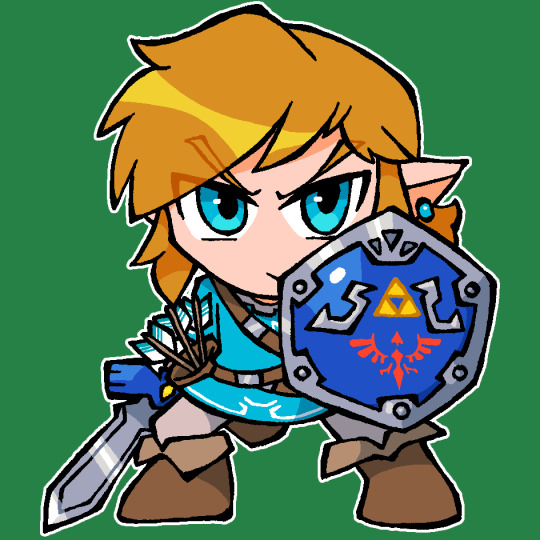


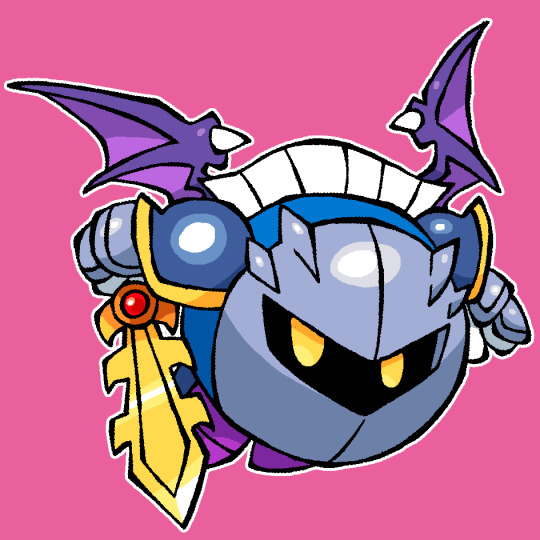
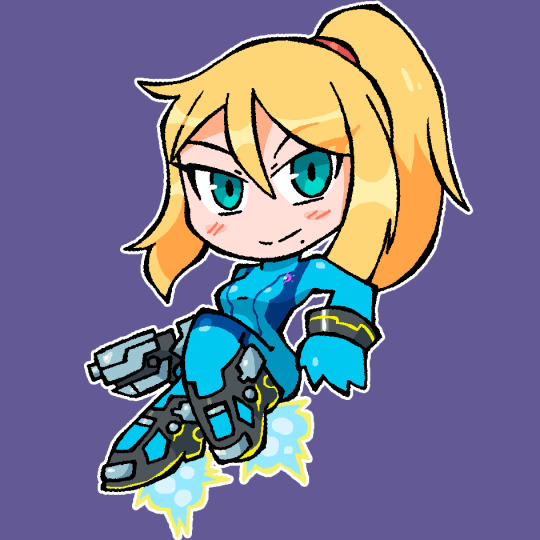


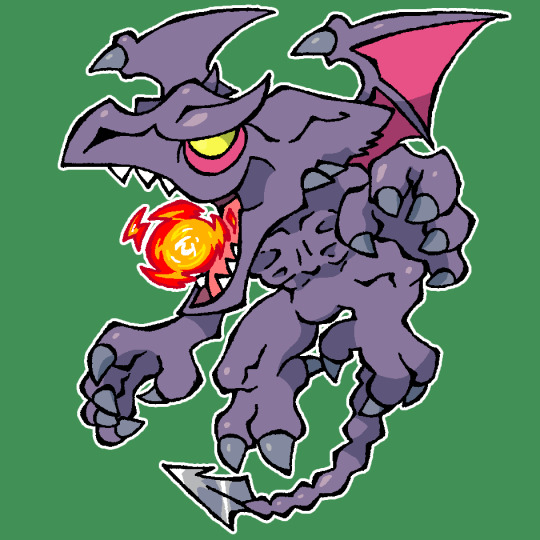
Super! Smash! BROOOOOOOOOOOOOOOOOOOOOOS!!!!!
#my art#nintendo#capcom#super smash bros#super smash bros ultimate#mario#super mario#link#the legend of zelda#fox mcloud#starfox#lucina#fire emblem#meta knight#kirby#samus aran#metroid#megaman#inkling#splatoon#ridley#stickers#chibi#chibi art
525 notes
·
View notes
Text
Is it just me, or is interaction in the Zelda fandom (LU and other such aus included) disproportional to the amount of people/content there is?
#I’ve been talking to another artist bigger than me#And we’ve both noticed that there’s so many people in this fandom#But barely any interaction on anything (ie meta posts and art and writing and the like)#If you’re an artist or writer I’d love your input#legend of zelda#the legend of zelda#linked universe#linkeduniverse
213 notes
·
View notes
Text
I've said a couple times on here that I stand by the fact that TOTK isn't rewriting what happened in past Zelda games (specifically Ocarina of Time and Skyward Sword) and I've only just realised that there's more to back this up.
if you read past here and nothing makes sense feel free to ask for clarification <3
How many sages are in Ocarina of Time? Seven.
How many are in TOTK? five.
two sages don't have a counterpart in this new Hyrule, and a whole new sage is added instead.
In Ocarina of Time there are seven sages: Light, Forest, Fire, Water, Shadow and Spirit, with Zelda simply being called "Seventh Sage" and having no defined title
in Totk? there are five: Light, Fire, Water, Lighting and Spirit. Zelda is also seemingly a Sage in totk too, given the title of Sage of Time (I think)
So that's Saria and Impa who have no counterpart as well as a whole new sage being created in TOTK- lightning, that role is taken up by the Gerudo but in Time, the Gerudo take the title of being the Sage of Spirit. Saria/Forest not showing up in TOTK makes complete sense, wouldn't be much sense in having a Regional phenomenon based on Korok Forest & having a Korok sage wouldn't make as much sense as just cutting the Forest Sage completely.
Shadow makes a little less sense to cut, there's the Depths for one, which could easily house a shadow temple (it already houses the Spirit and Fire temple) and with the ring ruins falling in Kakariko village with knowledge of the sages, it'd make sense to have a sage of Shadow be a sheikah like she is in Time.
~~~~~~~~~~~~~
this isn't even the first case of the Sages showing up more than once, In Spirit Tracks the Sages show up as a collective of people from the Lokomo Race, where there are Six of them
They appear in Twilight Princess as a group of Six ghostly men who guard the mirror of Twilight,
and in "Link Between Worlds" there are also Six of them, transformed into paintings by Yuga.
and also wind waker, where things get a little messy since Makar, a Korok is a sage of Wind and Medli is the Sage of Earth.
anyway, Sages appear all over the Zelda timeline with no set race or powers representing them, the only important thing about them is that they all play a role in defeating Ganon/aiding the Hero of Hyrule and the Hylia reincarnate.
#legend of zelda#loz#zelda#tloz#the legend of zelda#loz meta#tears of the kingdom#Legend of Zelda Sages#Loz discussion post#discussion post#Legend of Zelda meta#Loz theory#totk sages#oot sages#ww sages#a link between worlds#Wind Waker#loz a link between worlds#loz botw#breath of the wild#botw#Spirit tracks#legend of zelda spirit tracks
27 notes
·
View notes
Text
Okay SO. Theory Rush after finishing Tears of the Kingdom. Go.
The Zonai are said to have descended from the heavens to help found Hyrule. I can think of another race that descended from the heavens. Do you guys think the minish are native to the Zonai sky islands?
Does the Depths set look a little familiar to you? This along with Josha's theory that people once lived down there, I wonder if the interlopers were present in the Depths before being banished to the twilight realm.
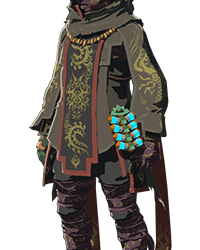
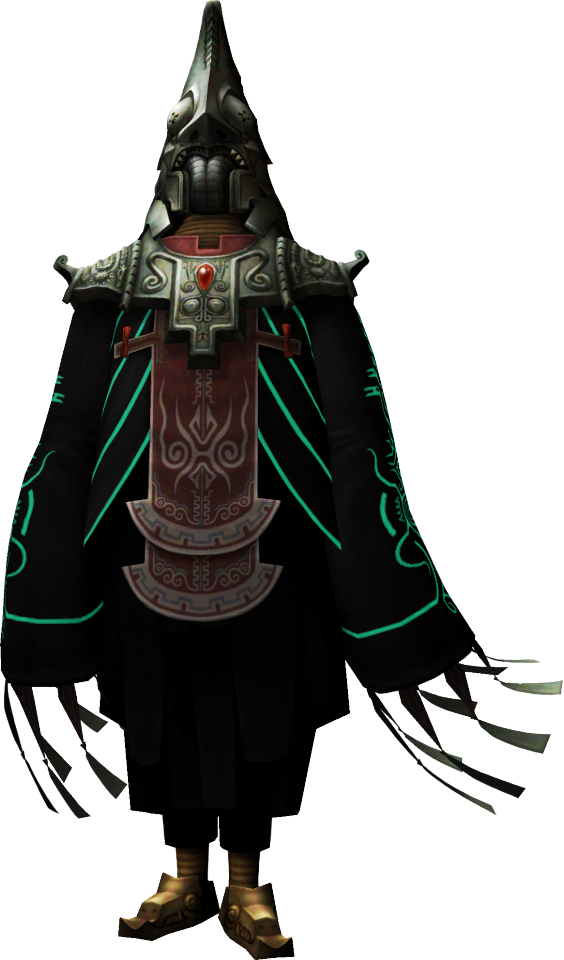
The architecture and robot designs from Skyward Sword have a distinct Zonai look to them! So that leads me to believe the Zonai were the race that created the Lanayru Mining Facility.


It might even be that the Past from Skyward Sword is indeed the time period that Zelda was transported back to! Maybe the legacy of the kingdom of Hyrule goes back even further than the fight between Hylia and Demise: though I admit the early appearance of Demon King Ganondorf throws a wrench in this theory.
About secret stones and the amber relics in Skyward Sword: I want to say there's a connection between them, though amber relics don't seem to be as rare and important as secret stones, (we find them in abundance in Skyward Sword and they don't do much). Of course, i haven't played SS in a while so if they have any more significance it's escaping me at the moment. For the time being I'd like to think ancient hylians might have carried them around as good luck charms to emulate secret stones of their own.

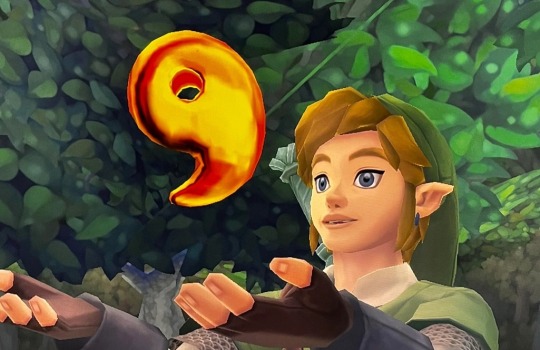
The Legend of the Great Sky Island mini quest in has the construct telling us that the island was supposed to be where a hero will one day awaken to defeat the Demon King. I know our Link wakes up on this island, but there's definitely something eating at my brain about the Great Sky Island being related to (or perhaps even IS) Skyloft, and that the awakening of the hero is referring to Skyward Sword Link. (This potentially supports the theory that the Past in TOTK predates the war between Hylia and Demise)
There's a pretty good chance that Rauru and Sonia's child could have been named Zelda, after the sweet time traveling girl they practically adopted :) the first princess of Hyrule named after the last princess of Hyrule.
There is a giant dragon skeleton in the Gerudo Desert Depths, big as or even bigger than Farosh, Dinraal and Naydra. It is my belief that this mystery dragon became a dragon ala Secret Stone alongside the three aboveland, but was killed at some point in the Depths. I don't know what four people decided to become dragons, but my strongest theory is that Dinraal, Farosh and Naydra are the draconified forms of the oracles of the Golden Goddesses, Din, Farore and Nayru. So who is this?
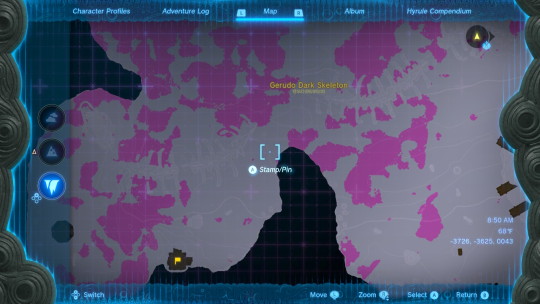

Seeing as the Lightroots underground are activated via Zonai hand terminal and each Lightroot lies directly beneath a shrine on the surface, I think the Lightroots are extensions of these shrines, having grown straight downward to light up the underground. This is probably obvious but I just barely figured this out 😅
Since Rauru, sage of light, and a new Temple of Time are in this game, I want to think that this person and location are more than just Easter Eggs to Ocarina of Time. I think that the sage from Ocarina of Time was named after King Rauru, though I'm not sure whether him being the sage of light would have been a coincidence or a direct inspiration.
What I do think is that he indeed did put the triforce in that very same Temple of Time and all the sky islands went to the Sacred Realm until Tears of the Kingdom, when they came back to earth and appeared in the sky. That's just a theory but why else would the sky islands be reappearing as if from nowhere?
Speaking of which, there were floating masses in the sky in Minish Cap, namely great big stone temples and fortresses. Minish Cap takes place during the early days of Hyrule, which would be pretty much right after the Zonai descended. Perhaps the Zonai are the Wind Tribe mentioned, and the people we see in game are their descendants, who look much more hylian than Zonai due to being crossed with full hylian genetics over the generations?
Anyway I need to retouch up on my Zelda lore to make sure I'm getting the details right, (that, and i haven't yet 100% the game so i may be missing some totk context), but I HAD to post my thoughts and get them out there! I'll add on later if I think of any more, in the meantime feel free to brainstorm!
#totk#tears of the kingdom#totk spoilers#tears of the kingdom spoilers#botw 2#botw 2 spoilers#just covering all my bases#totk theory#totk thoughts#totk meta#loz#legend of zelda#the legend of zelda#loz totk#wicked.loz
514 notes
·
View notes
Text
Can we analyse Tulin for a bit?
Apart from being the keet birb boy, perhaps what makes his character so enthralling is how it so brilliantly reflects and offers commentary on the influences that have shaped him.
Whether that be Revali, his father Teba, and ESPECIALLY Link. Hell, it's no wonder that Link & Tulin have garnered such a sibling dynamic. Tulin essentially IS Link, from a time before the burden of responsibility and pain caused Link to cave in on himself pre-Breath of the Wild.
Right down to the veteran warrior father figure (Link's father was captain of the guard) and their acceptance of a newfound legacy out of forthright integrity. Tulin, at this point in his life, has yet to give himself away until there's nothing of him left to give, and let's pray he never needs to.
But Tulin would do that in a heartbeat, if called upon. He is very much his father's son.
You can see it in how archtypical childish spunk is tempered, like steel, by Teba's down-to-earth bluntness and sheer work ethic.
(BTW I wonder if Link sees his own father in Teba? That'd check out.)
But what caught me most pleasantly off-guard is Tulin's skepticism, which has become one of his most compelling traits for me. It's not something you would expect.
He did not believe that the Stormwind Ark existed, and while ultimately proven wrong, it frankly wasn't an illogical assumption to make. Tulin clearly thought through that opinion. He'd also grown frustrated that the Rito placed their faith on a songbook miracle — a eucatastrophe, if you will — instead of something more concrete like personal skill or, say, Link's whole-ass existence.
The second Link arrived and offered his aid, Tulin accepted his help without hesitation. He turned his skepticism inward to reevaluate his own tenets. And it's as a duo that they brought about said eucatastrophe through no one's strength but their own. They are siblings, Your Honor. Aryll 2.0
(If Revali had been blessed with a support network saying "it's okay to accept help. no man is an island," doubtless he still would have perished in Vah Medoh. But there would be less of an ego to shatter. He would have faced death with less blind panic and more dignity. And most importantly, he'd have other people to bolster the wind beneath his wings during his short life.
(At the very least, Revali would not have as big an ass not be as big an ass, just as Tulin would be a different person without his family.)
dammit quaquaval you have RUINED me
Also, one thing that everyone seems to miss is just how deceptively intelligent Tulin turns out to be. This kid fuckin' knows his stuff. His mastery of aerodynamics beyond the instinctual is almost on par with Revali at such a young age. And how many precision headshots has his avatar saved your ass with, don't lie.
He somehow managed to follow his father back through time. Tulin can see Koroks.
It's not the same kind of passion-fuelled intellect as, say, Zelda has. More of an unyeilding conviction to learn all he can and put it into practice. About as understated a quality as Yunobo's inexplicable business acumen and economic sense.
As his mother Saki put it, for Tulin to develop as an individual, he needs to experience more of reality and its hardships. Shooting bullseyes and improving one's flying prowess / wind magic can't contend with genuine combat. True to her word, Tulin had to experience mistakes firsthand, and critically examine his own naïve ways of thinking in order to take those necessary steps.
...
So then, uh, is it wrong for me to wish something horrible upon him, if only to witness the positive character growth that springs from it? Tulin isn't the sort who'll shatter under pressure, like Revali did at the end of his life, or like Link did under the weight of expectation. Buckle, yes — but not break. Tulin's steadfast conviction, inherited from his father and guided by the people he loves, would assuredly see him through.
In any event, his Hero's Journey isn't close to over. I'd be curious to see Tulin at its conclusion.
tl;dr I wanna Emesis Blue his bitch-ass, AITA?
#character analysis#tulin#loz#legend of zelda#botw#breath of the wild#totk#tears of the kingdom#teba#link#revali#tulin totk#rito#rito botw#tulin of rito village#sage of wind#meta#korok#sibling dynamics#aoc#age of calamity#aryll#yunobo#eucatastrophe#quaquaval#emesis blue
761 notes
·
View notes
Text
What if families sleeping in the same bed (parents and children, all together) was the norm in Skyloft?
Historically it was the norm in many cultures across multiple eras.
Students at the academy get a little more privacy for various reasons, but even then it's not uncommon to find a small pile of knight candidates passed out in odd places (like the sparring hall, the second floor landing directly in front of Gaepora's door, and on one occasion a table in the cafeteria. Link fell off the table.)
3 notes
·
View notes
Text

You've met with a terrible fate, haven't you???
#kirby right back at ya#kirby of the stars#kirby#kirby's return to dreamland deluxe#kirby's return to dreamland#waddle dee#bandana dee#meta knight#magolor#gooey#gooey kirby#king dedede#the legend of zelda majora's mask#majora's mask#store#kirby fanart#fanart#digital artist#digital drawing#digital art
1K notes
·
View notes